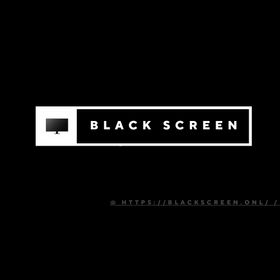
Start Page
A place your business can call home

Use image blocks to sell cool products 🛍
Make it your own! You can edit any of the existing blocks of content on this page or add new blocks.
The Ultimate Guide to Using BlackScreen.Onl: Eye Comfort, Energy Savings & Screen Diagnostics
Extended screen time, whether for work, study, or leisure, often leads to screen-induced eye strain—a condition marked by fatigue, dryness, and difficulty focusing. This strain not only reduces productivity but also disrupts sleep patterns by exposing users to prolonged blue light and glare. In an increasingly digital world, such challenges demand simple yet effective solutions. BlackdarkScreenemerges as a practical tool designed to mitigate eye strain by offering a fullscreen black display. It also serves additional functions such as energy conservation—particularly on OLED screens—and visual diagnostics like dead pixel and backlight testing, all accessible directly from a browser.
What is BlackScreen.Onl?
FULLBlackScreen is a browser-based utility that provides users with a fullscreen black display. Designed for simplicity and versatility, it operates directly within any modern web browser, eliminating the need for installation or software downloads. The platform is accessible across a wide range of devices, including desktops, laptops, tablets, and smartphones. Its primary functions include minimizing visual strain, supporting screen testing tasks, and enhancing focus in low-light environments.
Key Features
Fullscreen Black Screen Mode: Offers an unobstructed, solid black display to reduce visual clutter and distractions.
Eye Strain Reduction: Particularly effective in low-light settings, helping users alleviate eye fatigue during extended screen use.
Energy Conservation: On OLED and AMOLED screens, black pixels consume significantly less power, aiding in battery preservation.
Screen Diagnostics: Facilitates the detection of dead pixels, backlight bleeding, and other display irregularities through high-contrast visibility.Reducing Eye Strain
Bright screens, especially during nighttime use, can suppress melatonin production—a hormone critical for regulating sleep—thereby contributing to insomnia and disrupted sleep cycles. Prolonged exposure to high-intensity light also causes visual fatigue, dryness, and discomfort. A fullscreen black screen emits minimal blue light, helping to ease strain on the eyes. By providing a low-luminance viewing environment, tools like plainBlackScreen support healthier screen habits and more comfortable nighttime use.
Conserving Energy on OLED Displays
OLED (Organic Light-Emitting Diode) screens differ from traditional LCDs in that each pixel emits its own light and can be individually turned off. When displaying pure black, OLED pixels are effectively powered down, resulting in significantly lower energy consumption. Utilizing a fullscreen black display, such as that provided by DarkBlackScreen, can therefore extend battery life on OLED-equipped smartphones, tablets, and laptops—making it both an energy-efficient and eco-conscious choice.
Screen Diagnostics
A fullscreen black display is an effective tool for identifying visual defects in screens. Dead or stuck pixels become more visible when contrasted against a pure black background, enabling users to pinpoint inconsistencies with greater accuracy. Similarly, BlackScreen.Onl helps reveal issues like backlight bleeding—where light leaks from screen edges—and screen uniformity problems. This makes it a practical utility for users conducting routine display checks or evaluating new monitors and devices.
How to Use Black Screen Effectively
Accessing the Tool
To begin using BlackScreen onl, simply visit black screen through any modern web browser. Once the page loads, click anywhere on the screen to activate fullscreen black mode. No installation or sign-in is required, ensuring quick and universal access across devices.
Practical Applications
Eye Rest During Breaks: Activate the black screen to give your eyes a break from bright visuals during work or study sessions.
Video and Presentation Backdrop: Use the fullscreen black display as a clean, non-distracting background for video recordings or live presentations.
Device Screen Testing: Employ the tool when inspecting new monitors, laptops, or smartphones to check for dead pixels, backlight bleed, or other screen defects.
Comparing BlackScreenOnl with Other Tools
All BlackScreen.com
AllBlackscreen.com expands beyond a standard black screen by offering multiple color options, catering to different user preferences and tasks. It also includes additional utilities such as a meditation mode and mirror usage, making it a more feature-rich but slightly more complex alternative to https://blackscreen.onl/
Blackcreen.Tools
Black Screen.Tools provides a minimalist black screen suitable for a range of tasks, including gaming and design work. While similar in simplicity to darkBlack Screen, it may appeal more to creative professionals or gamers due to its broader use cases.
Black Screen.Live
Black Screen.Live enables users to switch between black and white screens, offering versatility for screen testing and visual balance. It features one-click fullscreen activation, similar to Black Screen, but adds the benefit of toggling modes for different lighting or testing scenarios.
Tips for Reducing Eye Strain Beyond Using Black Screens
Adjust Display Settings
Optimizing your screen settings can significantly reduce eye strain. Lower screen brightness to match ambient light conditions, especially in dark environments. Enable built-in blue light filters or "night mode" features to reduce high-energy visible light exposure, which can disrupt sleep and cause discomfort.
Follow the 20-20-20 Rule
Incorporate the 20-20-20 rule into your screen routine: every 20 minutes, take a 20-second break to look at something at least 20 feet away. This practice helps relax eye muscles and prevents digital eye fatigue.
Maintain Proper Posture and Lighting
Create an ergonomic viewing setup by ensuring your screen is positioned at eye level and at a comfortable distance. Use sufficient ambient lighting to minimize glare, and adjust screen angles to avoid reflections from windows or overhead lights.
How to Use fullBlack screenfor Diagnostics, Productivity, and Display Optimization
Visit darkBlack screen using any browser or device.
Choose your desired solid screen color: black, white, red, green, or custom.
Click “Fullscreen” to activate edge-to-edge display.
Toggle between black and white to identify dead or stuck pixels.
Use white screen mode for photography, Zoom lighting, or content shoots.
Display a black screen during breaks to reduce eye fatigue or clean your monitor.
Activate calming hues for ambient lighting, meditation, or room ambiance.
On OLED devices, use the black screen to conserve power when idle.
Adjust brightness manually for optimal screen visibility.
Press “Esc” to exit fullscreen mode anytime.
FAQS
1.How do I make my screen completely black?
To make your screen black, simply visit plainblackscreen and click the fullscreen icon. The site will darken your screen entirely, creating a distraction-free or test-ready display.
2.Can I use fullBlackScreen to reduce eye strain?
Yes, Black Screenimage helps minimize eye fatigue by providing a dark, ambient screen that reduces glare. It's especially effective in low-light environments and during extended viewing sessions.
3.Is BlackfullScreen energy-efficient for OLED screens?
Yes. On OLED displays, black pixels consume less power. Using full dark Black Screen in fullscreen mode helps conserve battery by reducing screen brightness and power usage.
4.Can I customize the black screen view?
Currently, Black Screen offers a default full charcoal-black screen. While customization is limited, its simplicity ensures universal compatibility and instant use.
5.Does Blackdark Screen work on mobile devices?
Yes, it supports smartphones and tablets. Just open the site in your browser and tap fullscreen for a black background.
6.Do I need to install anything to use Black background Screen?
No installation is required. Black Screen runs entirely in your web browser, making it fast, lightweight, and plugin-free.
7.What does a black screen on my device mean?
A black screen can indicate display issues, system errors, or power-saving mode. It may also occur during boot-up or after a crash.
8.How do I restart a computer with a black screen?
Hold down the power button until the system shuts off. Wait a few seconds, then power it on again. If the screen remains black, try booting into Safe Mode.
9.Can Black Screen help detect dead pixels?
Yes, a black background is ideal for identifying dead or stuck pixels on screens. Users can visually inspect their display for imperfections.
